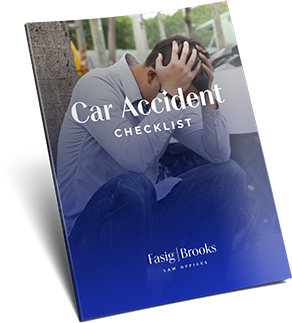
Currently, in Florida, child restraint regulations require that every driver of a motor vehicle must provide appropriate protection for children age 5 and younger by using a crash-tested, federally approved car seat.
As of right now, for children 3 years old and younger, the child restraint must be a separate car seat carrier or a manufacturer’s integrated child seat. For children who are age 4 through age 5, the law allows for the use of a separate car seat carrier, an integrated child seat, or a seat (safety) belt. Children age 6 through age 17 are allowed to use a seat belt restraint.
The law will change beginning January 1, 2015. As of that date, children age 4 through age 5 may use a separate carrier, a vehicle’s integrated child seat, or a booster seat.
Appropriate Child Restraints Are Based On Age And Size
Experts generally recommend that all children under the age of 13 ride in the rear seat of a vehicle to prevent dangerous injuries. For younger children, the Florida Highway Patrol recommends the following steps for proper child restraint in a Tallahassee motor vehicle:
- Step 1 – Rear-Facing Car Seats – these types of child restraints offer the best protection for children and the rear-facing position provides the most protection in the event of a motor vehicle accident. They should be used until the child no longer meets the height and weight limits of the particular seat, as recommended by the car seat’s manufacturer.
- Step 2 – Forward-Facing Car Seats – when a child outgrows his or her rear-facing car seat (when the child is at least 1 year old and at least 20 pounds), he or she should be moved to a forward-facing child safety seat. The seat should remain installed in the back seat of the vehicle. A child should remain the forward-facing car seat until he or she reaches the age and weight limit of the seat (typically at 4 years and 40 pounds).
- Step 3 – Booster Seat – A child who outgrows his or her forward-facing car seat should then move to a booster seat, which should remain in the rear seat of the vehicle. A child should continue riding in a booster seat until the vehicle’s safety belt correctly fits the child when the child sits properly in the vehicle’s installed seat. To fit correctly, a child typically needs to be at least 4’9” tall, which usually occurs sometime around age 8.
Motor Vehicle Crash Injuries Can Be Particularly Devastating To Children
Because of their relatively smaller size and lack of muscle development, children can be seriously injured in a motor vehicle crash. That is why use of a proper child safety seat is so important—it reduces the risk of incapacitating injuries to our most precious cargo—our children.
In a recent National Highway Traffic Safety Administration review of car accidents involving children, the agency found the following:
- all children involved in rollover crashes had the highest rate of serious injuries. Children who were unrestrained in a rollover accident were three times more likely to be seriously injured than children who were properly restrained in a safety seat appropriate for their age.
- in near-side accidents (accidents that occurred on the side of the vehicle closest to where the child was sitting), unrestrained children were eight times more likely to sustain incapacitating injuries when compared with children who were properly restrained in child safety seats.
For children who were seriously injured in motor vehicle accidents, some of the most common injuries included:
- head injuries;
- thoracic injuries;
- contusions or lacerations (bruises or cuts);
- concussions or loss of consciousness;
- skull base fractures;
- rib fractures;
- lung injuries;
- pelvic fractures;
- small bowel and large bowel injuries;
- hand injuries; and
- below-knee injuries.
Tallahassee Legal Help For Children Injured In Motor Vehicle Accidents
While injuries to anyone in a motor vehicle accident can be catastrophic, motor vehicle accidents involving children can be particularly devastating. Head injuries, skull fractures, and concussions in children are of particular concern because of the long-term consequences and complications that can develop from such injuries. However, any bodily injury to a child can create long-term disabilities and a need for ongoing medical care.
A child who has been injured in a car accident can have significant ongoing medical and therapy needs, along with training, educational, and rehabilitative needs. If you are the parent or guardian of a child who has been injured in a motor vehicle accident, contact the experienced Tallahassee personal injury attorneys at Fasig & Brooks. We are here to listen to your situation and help you determine how you can protect your child’s future and obtain the maximum available recovery for his or her injuries. Call us toll free today at (850) 777-7777 or use our online consultation form to arrange for a free legal consultation with our skilled and compassionate Tallahassee attorneys.





